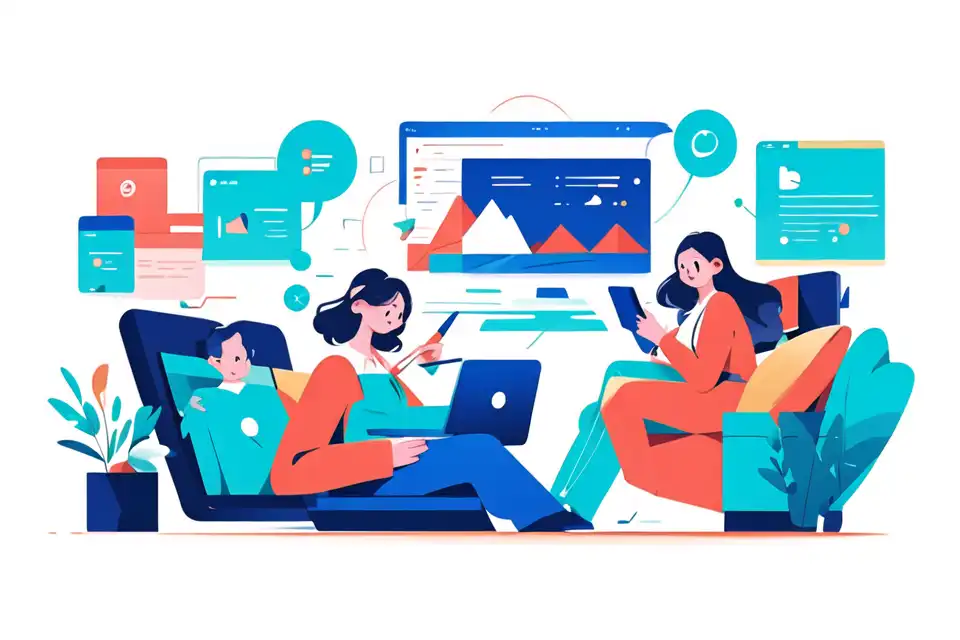Social Loafing
Explore what Social loafing means for your meetings. Learn more about its definitions, best practices, and real-world examples to enhance your meeting effectiveness. Dive into the importance, challenges, and solutions for each term.
Try Lark for Free
In the fast-paced business landscape, effective communication and collaboration are pivotal for organizational success. However, certain behavioral phenomena, such as social loafing, can impede team performance and hinder the attainment of collective goals. Social loafing, often observed in meetings and group settings, demands a comprehensive understanding to mitigate its effects and uphold team productivity. This article delves into the nuances of social loafing, its implications in professional communication, and strategies to address and prevent its occurrences.
Get Lark for meeting minutes today.
Definition of social loafing
Social loafing refers to the phenomenon wherein individuals exert less effort while working collectively in a group than when working independently. This behavior stems from a perceived reduction in personal accountability within a larger team, leading to a decline in individual contribution and overall productivity. Additionally, social loafing may manifest in various forms, including free-riding, where some members rely on the efforts of others, and motivational loss, where individuals experience reduced intrinsic motivation in group settings.
Importance of social loafing in meetings
Understanding the impact of social loafing in meetings is crucial for fostering a culture of accountability and maximizing team effectiveness. Recognizing its manifestations enables leaders to implement tailored strategies to mitigate its effects, thereby creating an environment conducive to meaningful participation and shared accountability. By acknowledging the significance of social loafing, organizations can proactively address its challenges and establish a collective commitment to the pursuit of excellence in professional communication.
Learn more about Lark Minutes
Provide examples of how social loafing applies in real-world meeting scenarios
Example 1: the impact of social loafing in project brainstorming sessions
Example 1: the impact of social loafing in project brainstorming sessions
In project brainstorming sessions, social loafing may surface when certain team members contribute minimally or refrain from actively participating in idea generation. This could result in an uneven distribution of workload and hinder the exploration of diverse perspectives, impacting the overall quality of the project.
Example 2: social loafing in team presentations
Example 2: social loafing in team presentations
During team presentations, social loafing might manifest through unequal participation, with some members overly reliant on others to convey critical information or insights. As a result, the team's collective delivery may lack depth and fail to resonate with the audience effectively.
Example 3: group discussions and the influence of *social loafing
Example 3: group discussions and the influence of *social loafing
In group discussions, social loafing can be evidenced by subdued engagement or limited contribution from specific team members, leading to incomplete exploration of ideas and perspectives. This can hinder the development of comprehensive strategies and compromise the quality of decision-making.
Example 4: the role of social loafing in decision-making processes
Example 4: the role of social loafing in decision-making processes
In decision-making processes, social loafing may inhibit the comprehensive evaluation of options, as certain team members may refrain from actively engaging in critical discussions or offering valuable insights. This could lead to suboptimal outcomes and hinder the realization of impactful decisions.
Example 5: mitigating social loafing in virtual meetings
Example 5: mitigating social loafing in virtual meetings
In the context of virtual meetings, social loafing can manifest through disconnected or distracted participation, affecting the overall synergy and the attainment of meeting objectives. Addressing this challenge requires tailored strategies to foster active engagement and maintain accountability across virtual platforms.
Best practices of social loafing
Addressing social loafing necessitates deliberate measures to optimize team dynamics and individual contributions in meetings. Implementing the following best practices can aid in mitigating its effects and cultivating a collaborative environment:
- Clearly Define Roles and Responsibilities: Establishing clear roles and delineating responsibilities within the team enables members to comprehend their individual contributions, fostering a sense of ownership and accountability.
- Encourage Open Communication: Cultivating an environment where all team members feel empowered to express their ideas and perspectives facilitates active participation, reducing the likelihood of social loafing.
- Implement Effective Monitoring Mechanisms: Regularly monitoring team performance and task allocation minimizes the occurrence of social loafing by promoting transparency and ensuring equitable participation.
Learn more about Lark Minutes
Challenges and solutions
Common Challenges Associated with Social Loafing in Meeting Settings
- Unequal Participation: Uneven contribution levels from team members can thwart the progression of discussions and compromise critical decision-making processes.
- Limited Accountability: The absence of individual accountability may lead to a lack of commitment to shared objectives, hindering the attainment of collective goals.
- Diminished Team Cohesion: Social loafing can erode team cohesion, impeding collaboration and hindering the nurturing of a conducive work environment.
Practical Solutions and Workarounds to Address Social Loafing
- Establish Clear Performance Metrics: Defining key performance indicators (KPIs) and tracking individual and collective progress fosters accountability and encourages active participation among team members.
- Promote a Culture of Recognition: Acknowledging and celebrating individual contributions instills a sense of achievement and reinforces the value of each team member's efforts, reducing the likelihood of social loafing.
- Foster Collaborative Decision-making: Encouraging participative decision-making processes nurtures a culture of shared accountability and promotes holistic contributions from all team members.
Conclusion
In essence, social loafing poses a significant challenge in the realm of professional communication, necessitating proactive measures to counter its effects and elevate team productivity. By comprehensively understanding the nature of social loafing, recognizing its manifestations in meetings, and implementing tailored strategies to address its occurrence, organizations can foster an environment of equitable participation, accountability, and cohesive collaboration, ultimately maximizing team productivity and driving success in professional endeavors.
Get Lark for meeting minutes today.
